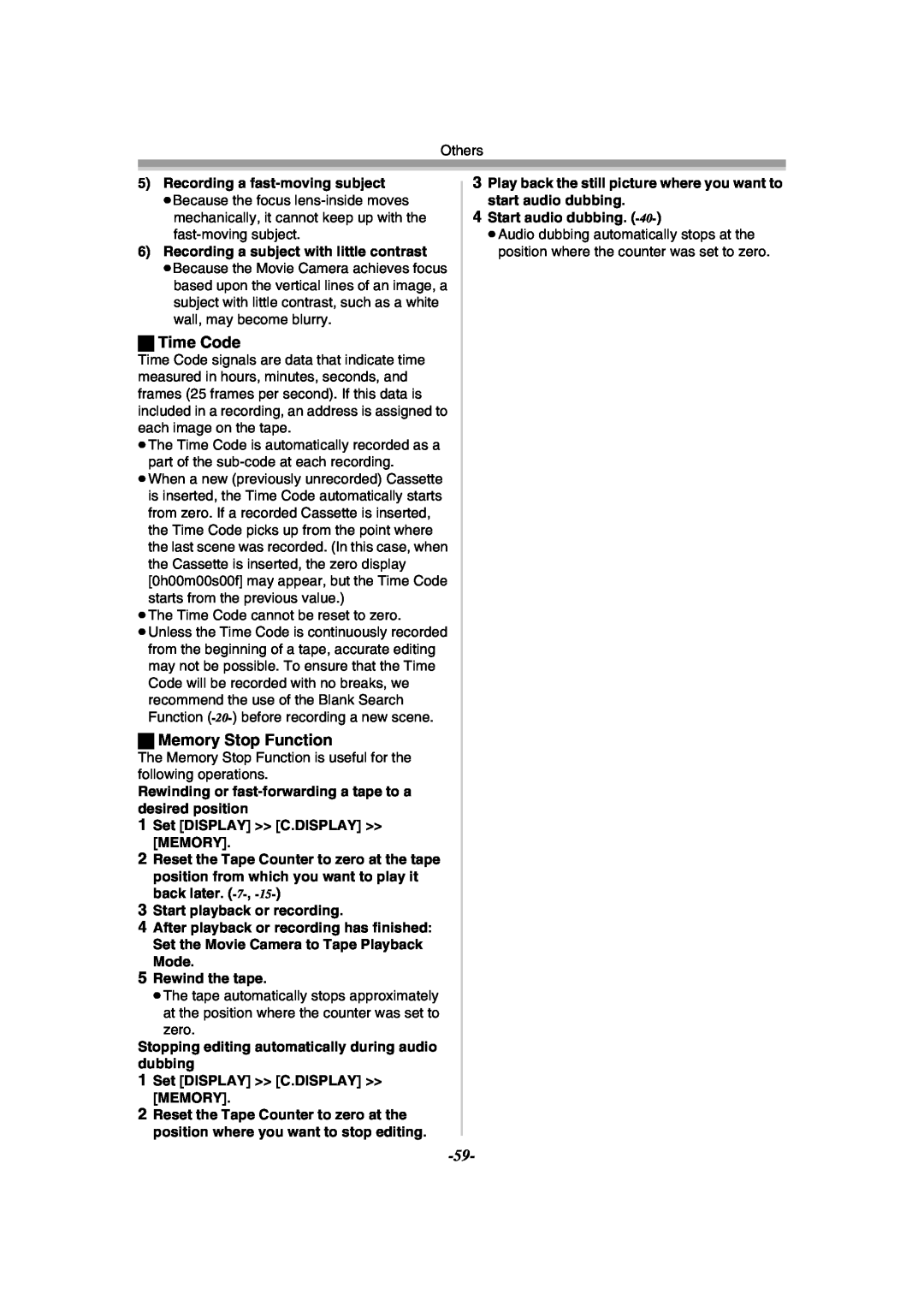
Others
5)Recording a fast-moving subject
≥Because the focus
6)Recording a subject with little contrast
≥Because the Movie Camera achieves focus based upon the vertical lines of an image, a subject with little contrast, such as a white wall, may become blurry.
ªTime Code
Time Code signals are data that indicate time measured in hours, minutes, seconds, and frames (25 frames per second). If this data is included in a recording, an address is assigned to each image on the tape.
≥The Time Code is automatically recorded as a
part of the
is inserted, the Time Code automatically starts from zero. If a recorded Cassette is inserted, the Time Code picks up from the point where the last scene was recorded. (In this case, when the Cassette is inserted, the zero display [0h00m00s00f] may appear, but the Time Code starts from the previous value.)
≥The Time Code cannot be reset to zero.
≥Unless the Time Code is continuously recorded from the beginning of a tape, accurate editing may not be possible. To ensure that the Time Code will be recorded with no breaks, we recommend the use of the Blank Search Function
ªMemory Stop Function
The Memory Stop Function is useful for the following operations.
Rewinding or fast-forwarding a tape to a desired position
1Set [DISPLAY] >> [C.DISPLAY] >> [MEMORY].
2Reset the Tape Counter to zero at the tape position from which you want to play it back later.
3Start playback or recording.
4After playback or recording has finished: Set the Movie Camera to Tape Playback Mode.
5Rewind the tape.
≥The tape automatically stops approximately at the position where the counter was set to zero.
Stopping editing automatically during audio dubbing
1Set [DISPLAY] >> [C.DISPLAY] >> [MEMORY].
2Reset the Tape Counter to zero at the position where you want to stop editing.
3Play back the still picture where you want to start audio dubbing.
4Start audio dubbing. (-40-)
≥Audio dubbing automatically stops at the position where the counter was set to zero.
